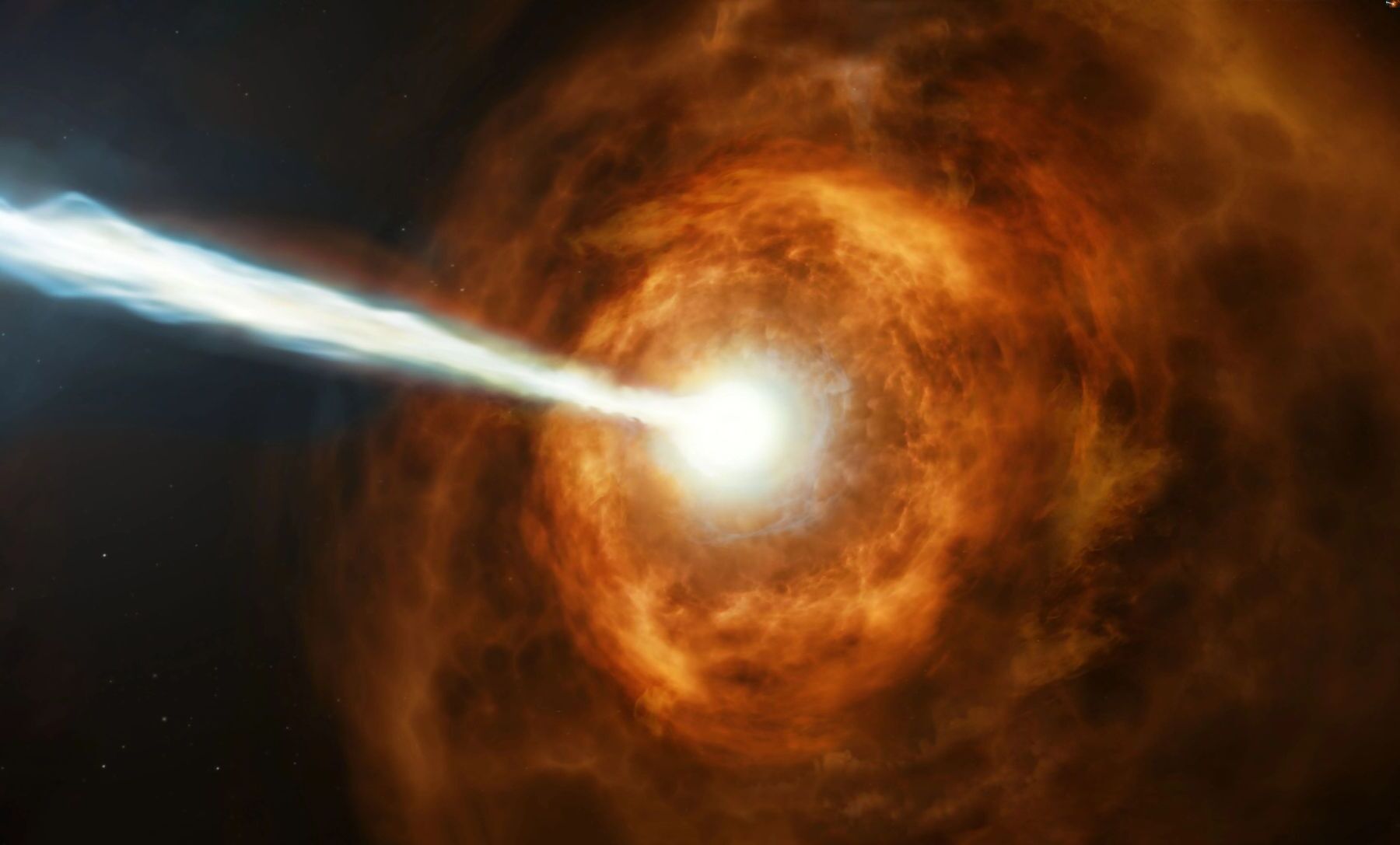
Gamma-ray bursts (GRBs) are among the most powerful explosions in the universe. These bursts of gamma radiation can outshine entire galaxies for brief moments. But what exactly are they? Gamma-ray bursts are intense flashes of gamma rays, the highest-energy form of light, lasting from milliseconds to several minutes. They are believed to originate from cataclysmic events like the collapse of massive stars or the merging of neutron stars. Scientists study GRBs to understand the extreme conditions of the cosmos. In this post, we’ll uncover 22 mind-blowing facts about these cosmic phenomena, shedding light on their origins, characteristics, and the mysteries they hold.
What Are Gamma-Ray Bursts?
Gamma-ray bursts (GRBs) are the most energetic explosions in the universe. They emit intense gamma radiation and can outshine entire galaxies for brief periods. Here are some fascinating facts about these cosmic phenomena.
-
GRBs were first detected in 1967 by the Vela satellites, which were initially designed to monitor nuclear tests.
-
They can release more energy in a few seconds than the Sun will emit in its entire 10-billion-year lifetime.
-
GRBs are classified into two main types: short-duration bursts lasting less than 2 seconds, and long-duration bursts lasting more than 2 seconds.
The Origins of Gamma-Ray Bursts
Understanding where GRBs come from helps scientists learn more about the universe's most violent events.
-
Long-duration GRBs are believed to originate from the collapse of massive stars, leading to supernovae or hypernovae.
-
Short-duration GRBs are thought to result from the merger of two neutron stars or a neutron star and a black hole.
-
The afterglow of a GRB can be observed in X-ray, optical, and radio wavelengths, providing clues about the burst's environment.
The Impact of Gamma-Ray Bursts
GRBs have significant effects on their surroundings and can even impact Earth.
-
A GRB occurring within our galaxy could potentially strip away the Earth's ozone layer, exposing life to harmful ultraviolet radiation.
-
Some scientists speculate that a GRB might have caused one of Earth's mass extinction events around 450 million years ago.
-
GRBs can trigger the formation of new stars by compressing gas clouds in their host galaxies.
Observing Gamma-Ray Bursts
Detecting and studying GRBs requires advanced technology and international collaboration.
-
The Swift satellite, launched in 2004, has been pivotal in detecting and studying GRBs in real-time.
-
The Fermi Gamma-ray Space Telescope, launched in 2008, has provided valuable data on the high-energy processes involved in GRBs.
-
Ground-based observatories like the Very Large Telescope (VLT) also play a crucial role in studying GRB afterglows.
Theories and Mysteries
Despite significant progress, many aspects of GRBs remain mysterious.
-
One theory suggests that some GRBs might be the result of magnetar starquakes, where the crust of a highly magnetized neutron star cracks.
-
The exact mechanism that produces the initial gamma-ray emission is still not fully understood.
-
Some GRBs exhibit unusual properties, such as extremely high polarization, which challenges existing models.
Gamma-Ray Bursts in Popular Culture
GRBs have captured the imagination of writers and filmmakers, making appearances in various forms of media.
-
The 2014 movie "Interstellar" features a scene where a GRB threatens the survival of a space mission.
-
GRBs are often used in science fiction literature as a plot device to explain catastrophic events or advanced alien technology.
-
The TV series "The Big Bang Theory" references GRBs in several episodes, highlighting their significance in astrophysics.
Future Research and Discoveries
Ongoing research aims to unravel more secrets about GRBs and their role in the universe.
-
The upcoming James Webb Space Telescope will help study the early universe and might provide new insights into GRBs.
-
Scientists are developing new models to better understand the jet structures and emission mechanisms of GRBs.
-
International collaborations, such as the Gamma-ray Burst Coordinates Network (GCN), enable rapid sharing of GRB data among researchers worldwide.
-
Future missions like the Transient High-Energy Sky and Early Universe Surveyor (THESEUS) aim to detect and study GRBs from the earliest epochs of the universe.
Final Thoughts on Gamma-Ray Bursts
Gamma-ray bursts (GRBs) are among the most powerful events in the universe. These cosmic explosions release more energy in seconds than our Sun will in its entire lifetime. They come in two main types: short and long. Short GRBs last less than two seconds and likely originate from merging neutron stars. Long GRBs, lasting over two seconds, are thought to result from massive stars collapsing into black holes. Scientists use satellites like NASA's Swift and Fermi to detect and study these bursts. Understanding GRBs helps us learn about the formation of black holes and the behavior of matter under extreme conditions. While they remain a mystery in many ways, ongoing research continues to uncover fascinating details. Keep an eye on future discoveries, as each new finding brings us closer to understanding these incredible cosmic phenomena.
Was this page helpful?
Our commitment to delivering trustworthy and engaging content is at the heart of what we do. Each fact on our site is contributed by real users like you, bringing a wealth of diverse insights and information. To ensure the highest standards of accuracy and reliability, our dedicated editors meticulously review each submission. This process guarantees that the facts we share are not only fascinating but also credible. Trust in our commitment to quality and authenticity as you explore and learn with us.


